NACE - National Association of Corrosion Engineers
SSPC - Society for Protective Coatings
Surface Preparation Standards
System SSPC Codes NACE
Solvent Clean SSPC.SP1 NONE
Hand Tool Clean SSPC.SP2 NONE
Power Tool Clean SSPC.SP3 NONE
White Metal Blast SSPC.SP5 NACE#1
Commercial Blast SSPC.SP6 NACE#3
Brush Off Blast SSPC.SP7 NACE#4
Pickling SSPC.SP8 NONE
Near White Blast SSPC.SP10 NACE#2
Powert Tool SSPC.SP11 NONE
Cleaning to
Bare Metal
Surface Preparation SSPC.SP13 NACE#6,
of Concrete
Surface Preparation Standards - Definitions
Solvent Cleaning SSPC-SP1 Definition:
Solvents such as water, mineral spirits, xylol, toluol etc., are used to remove solvent-soluble foreign matter from the surface of ferrous metals. Rags and solvents must be replenished frequently to avoid spreading the contaminant rather than removing it. Low-pressure (1500 - 4000 psi) high volume (3 - 5 gal/min.) water washing with appropriate cleaning chemicals is a recognized "solvent cleaning" method. All surfaces should be should be cleaned per this specification prior to using hand tools or blast equipment.Hand Tool Cleaning SSPC-SP2 Definition:
A mechanical method of surface preparation involving wire brushing, scraping, chipping and sanding. Not the most desirable method of surface preparation, but can be used for mild exposure conditions. Optimum performances of protective coatings should not be expected when hand tool cleaning is employed.Power Tool Cleaning SSPC-SP3 Definition:
A mechanical method of surface preparation widely used in industry and involving the use of power sanders or wire brushes, power chipping hammers, abrasive grinding wheels, needle guns etc. Although usually more effective than hand tool cleaning, it is not considered adequate for use under severe exposure conditions or for immersion applications.White Metal Blasting SSPC-SP5, or NACE #1 Definition:
The removal of all visible rust, mill scale, paint and contaminants, leaving the metal uniformly white or grey in appearance. This is the ultimate in blast cleaning. Use where maximum performance of protective coatings is necessary due to exceptionally severe conditions such as constant immersion in water or liquid chemicals.SSPC-SP5/NACE #1 Sample:
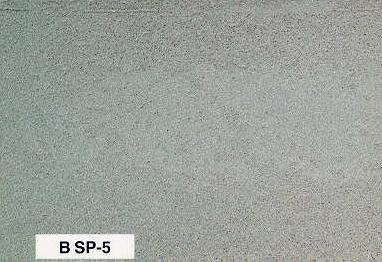
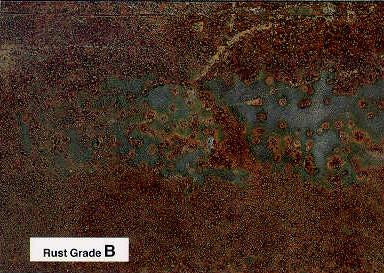
Commercial Blast SSPC-SP6, or NACE #3 Definition:
All oil, grease, dirt, rust scale and foreign matter are completely removed from the surface and all rust, mill scale and old paint are completely removed by abrasive blasting except for slight shadows, streaks or discolouration caused by rust stain, mill scale oxides or slight, tight resides of paint or coating that remain. If the surface is pitted, slight residue of rust or paint may be found in the bottom of pits; at least two-thirds of each square inch of surface area shall be free of all visible residues and the remainder shall be limited to the light residues mentioned above.SSPC-SP6/NACE #3 Sample:
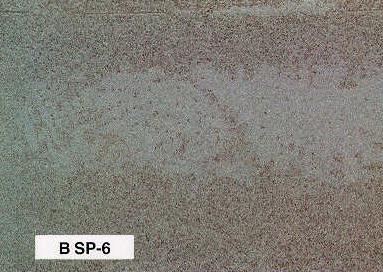

Brush Off Blast SSPC-SP7, or NACE #4 Definition:
A method in which all oil, grease, dirt, rust scale, loose mill scale, loose rust and loose paint or coatings are removed completely. Tight mill scale and tightly-adhered rust, paint and coatings are permitted to remain. However all mill scale and rust must have been exposed to the abrasive blast pattern sufficiently to expose numerous flecks of the underlying metal fairly uniformly distributed over the entire surfaceSSPC-SP7/NACE #4 Sample:
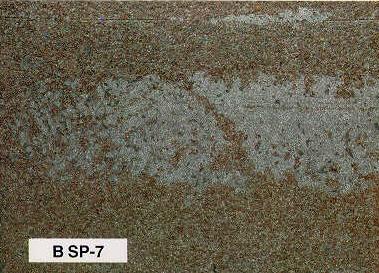

Near White Blast SSPC-SP10, or NACE #2 Definition:
In this method, all oil, grease, dirt, mill scale, rust, corrosion products, oxides, paint or other foreign matter have been completely removed from the surface by abrasive blasting, except for very light shadows, very slight streaks or slight discolouration caused by rust stain, mill scale oxides or slight, tight residues of paint or coating. At least 95% of each square inch of surface area shall be free of all visible residues, and the remainder shall be limited to the light discolouration mentioned above. From a practical standpoint, this is probably the best quality surface preparation that can be expected to today for existing plant facility maintenance work.SSPC-SP10/NACE #2 Sample:
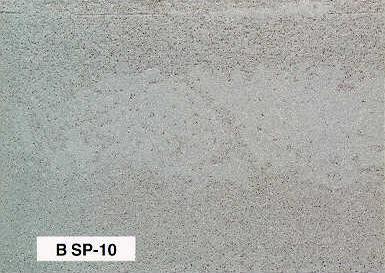

Power Tool Cleaning to Bare Metal SSPC-SP11 Definition:
Utilizing same equipment as Power Tool Cleaning to remove all visible coatings and contaminants to bare metal substrate.Surface Preparation of Concrete SSPC-SP 13, or NACE #6 Definition:
An acceptable prepared concrete surface should be free of contaminants, laitance, loosely adhering concrete, and dust, and should provide a sound, uniform substrate suitable for the application of protective coating or lining systems. When required, a minimum concrete surface strength, maximum surface moisture content, and surface profile range should be specified in the procurement documents (project specifications).
Aluminium Definition:
Remove water-soluble dirt and chemicals with water and detergent; solvent-soluble contaminants with solvent. Rinse, allow to dry, them power or hand abrade to remove the thin film of aluminium oxide. Moderate exposures require only one or two topcoats. Avoid using lead pigmented primers and topcoats. Exposure to corrosive chemicals calls for an epoxy primer followed by an appropriate topcoat for the environment.Brass, Bronze, Copper, Lead, Terne Definition:
Remove contaminants with a combination of water, detergents and solvents (same as aluminium). Allow the metal to dry, then power or hand abrade to remove oxides. Conventional oil and alkyd base primers or finishes may be used.Galvanized Metal Definition:
Clean same as aluminium and Brass etc, or allow to weather for six months. Caution: Be sure the manufacturer of the galvanized metal has used a paintable "white rust" preventative. Conventional coatings containing oil or alkyd resins must not be used. Specify only special primers made for use on galvanized metal. In severe Type A environments, or in areas of high humidity or continuous condensation, brush blasting is recommended to assure maximum system adhesion and performance.Surface Preparation Standards Charts
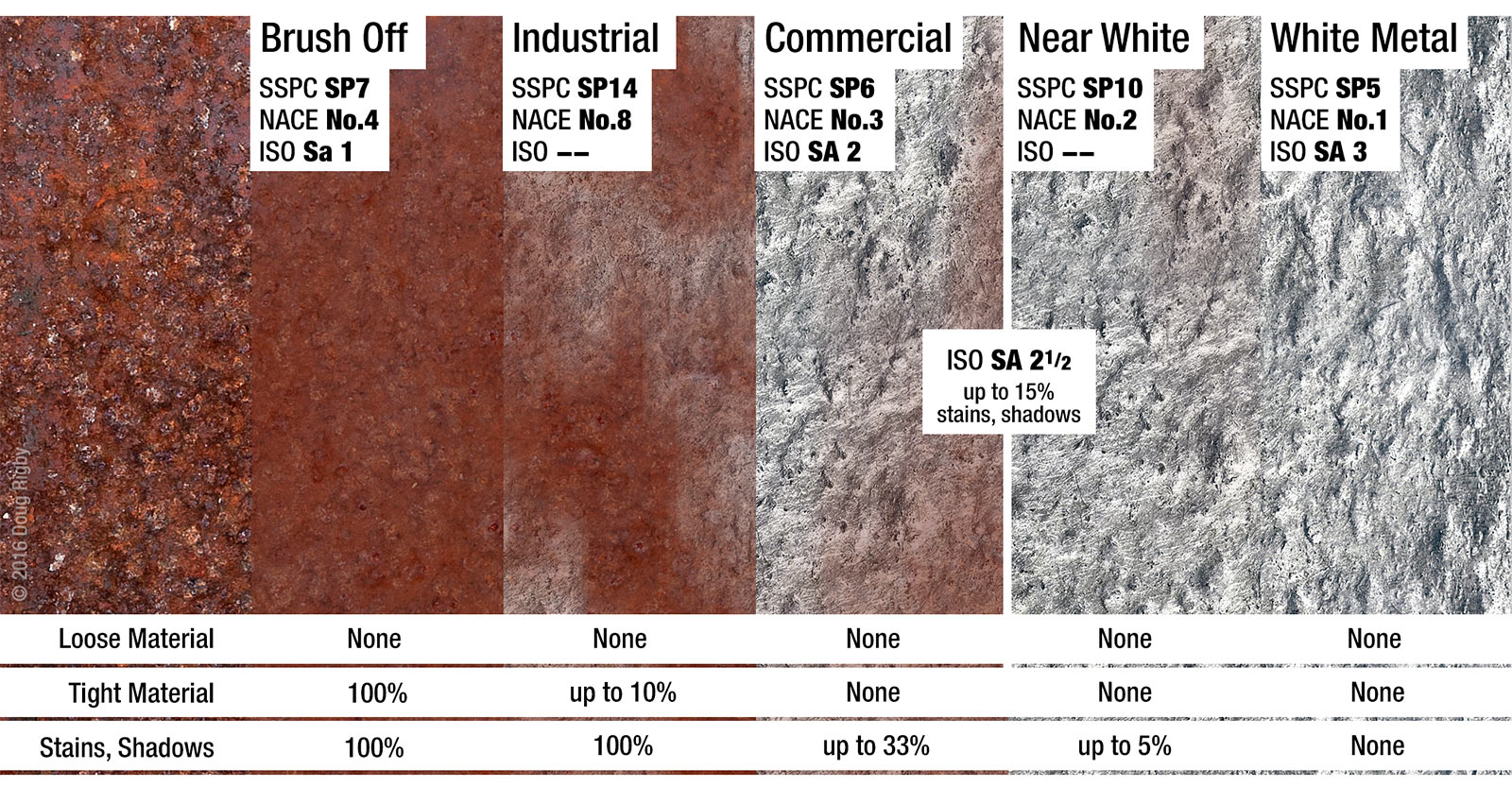
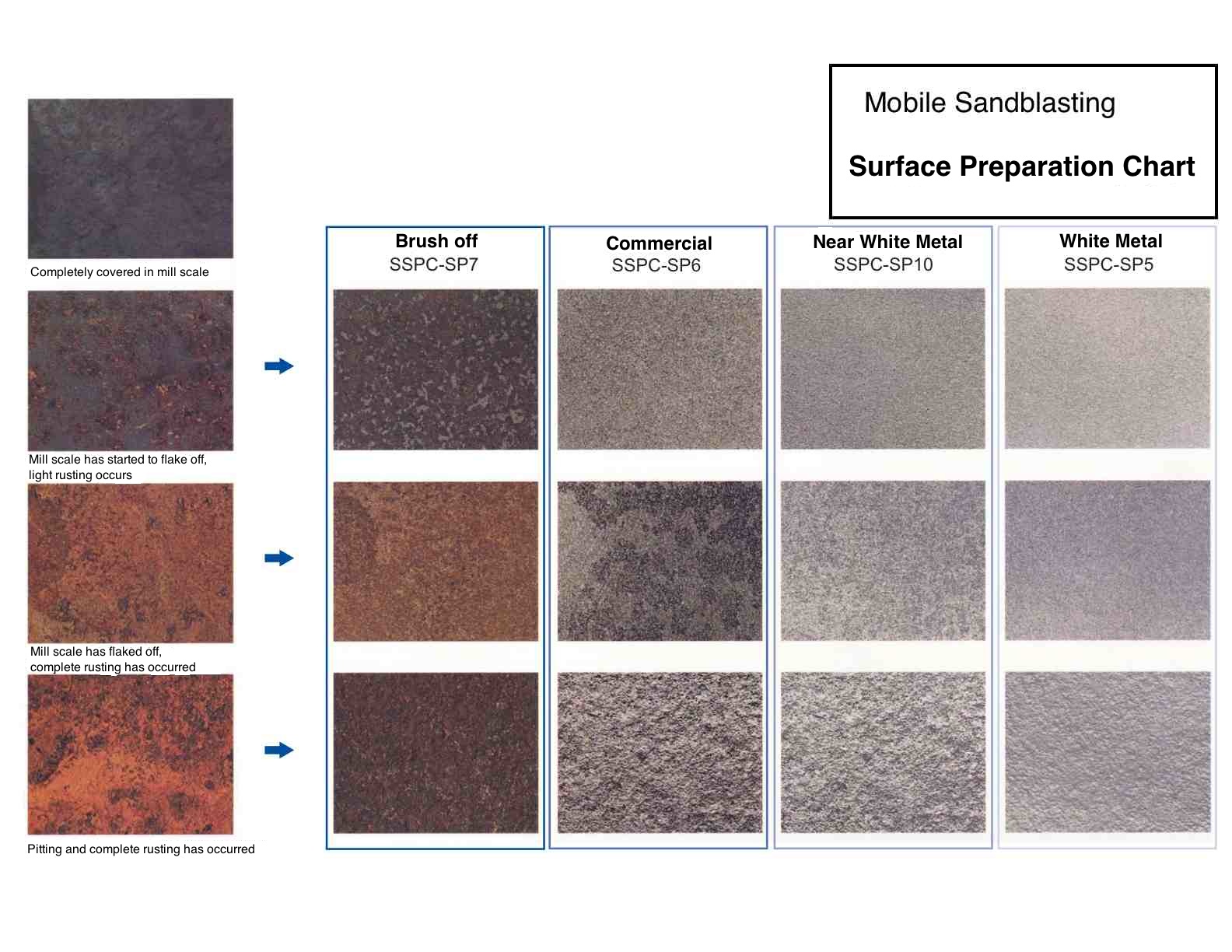
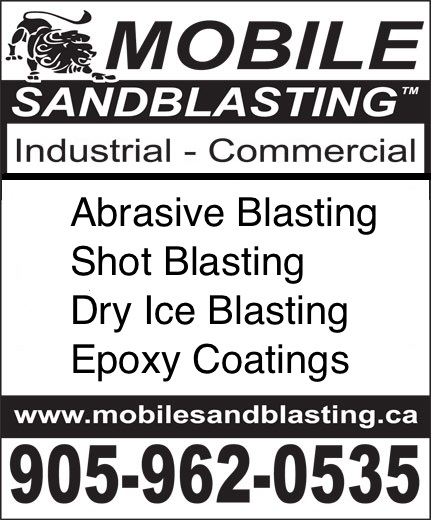
Phone:
(905) 962-0535
Email:
Service Area:
-
• GTA
• Toronto
• Richmond Hill
• Markham
• Vaughan
• Scarborough
• North York
• Etobicoke
• Brampton
• Halton
• Mississauga
• Oakville
• Guelph
• Kitchener
• Waterloo
• Cambridge
• Burlington
• Hamilton
• Brantford
• London
• Grimsby
• St. Catharines
• Lincoln
• Niagara
• Welland
Services:
-
• Sandblasting
• Abrasive Blasting
• Wet Abrasive Blasting
• Shot Blasting
• Dry Ice Blasting
• Peening
• Epoxy Coatings
• Architectural Concrete